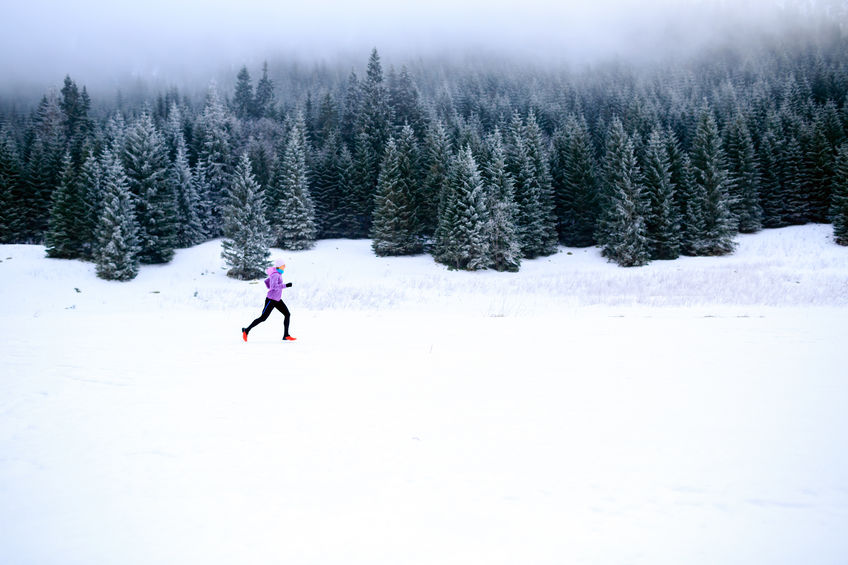Every winter I see a patient or two that has injured themselves while running outside. These injuries range from groin muscle strains and knee ligament tears to more unfortunate wrist fractures. Despite the obvious clothing challenges that come from running in sub-zero temperatures, Calgary has a particular set of issues relating to our freeze/ thaw cycles.
As a year round outside runner that moved from the rainy West Coast 16+ years ago I had to figure out how to transition from wet winters to cold and icy ones.
The biggest, most impactful adjustment a runner can make ( and the advice I give to all of my winter running patients) is to add some traction to your footwear. Every year there are more and more options for spikes/coils that you can add to your favorite runner. My current favorites are those runners that come with spikes imbedded in the soles. Keep in mind that these changes will stiffen up the sole of your shoe. This may force your calf muscles to work a little harder for push off and require more input from your gluteal muscles. Like any footwear change, introduce them gradually on your shorter mileage days.
Another winter running strategy is wisely picking your route. Calgary has a large pathway system which, more often than not, has been cleared from snow before the roads. If hills are part of your program pick one that is nice and clear to do your repeats. Don’t assume that if it was great one day it will stay that way. You may want to access the indoor running tracks or a treadmill as an option for some speed work and hills.
With respect to pace and stride length we tend to naturally self-limit ourselves on surfaces we are less sure about. Generally we won’t let ourselves really speed up and open up our stride length if we are aware of potential slips. Published in theScandinavian Journal of Medicine and Science in Sports, 2018 is also some new research about running injury relating to Peak Braking Force (PBF). PBF is the amount of force your body pushes back when you land and was surprisingly a bigger predictor of injury than thought. We reduce PBF, and theoretically lessen our chance of injury, by slowing down and/or decreasing our stride length. Although the study participants were female runners on a treadmill controlled environment, the strategies for reducing PBF are exactly what we should be doing for outside winter running conditions. If slowing down is a challenge for you, reducing you stride length will still give a reduction in PBF and may improve your stability.
Finally, it is what we do for our body in addition to running that will further decrease the likelihood of a winter running injury. Winter is an ideal time to work on your strength and balance. Running is ultimately a single leg sport meaning that one side of our body has to be able to land, shock absorb 2.5 times our body weight, while keeping ideal biomechanics throughout. Balance work, gluteal/lower abdominal strength and spinal mobility are all areas I routinely review with runners. A rigid, poorly supported body doesn’t have a chance in reacting to an unexpected slip.
Nicole Hunter
Physiotherapist, Marda Loop Physiotherapy
BSc., BSc. PT, CGIMS, FCAMPT
Napier C, MacLean CL, Maurer J, Taunton JE, Hunt MA.
Kinetic Risk Factors of Running-Related Injuries in Female Recreational Runners. Scan J Med Sci Sports May 30, 2018.

